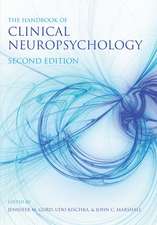Galileo's Visions: Piercing the spheres of the heavens by eye and mind
Autor Marco Piccolino, Nicholas J. Wadeen Limba Engleză Hardback – 5 dec 2013
Preț: 498.75 lei
Preț vechi: 709.23 lei
-30% Nou
Puncte Express: 748
Preț estimativ în valută:
95.45€ • 99.28$ • 78.80£
95.45€ • 99.28$ • 78.80£
Carte tipărită la comandă
Livrare economică 03-09 aprilie
Preluare comenzi: 021 569.72.76
Specificații
ISBN-13: 9780199554355
ISBN-10: 0199554358
Pagini: 338
Dimensiuni: 181 x 253 x 25 mm
Greutate: 0.83 kg
Editura: Oxford University Press
Colecția OUP Oxford
Locul publicării:Oxford, United Kingdom
ISBN-10: 0199554358
Pagini: 338
Dimensiuni: 181 x 253 x 25 mm
Greutate: 0.83 kg
Editura: Oxford University Press
Colecția OUP Oxford
Locul publicării:Oxford, United Kingdom
Recenzii
In this book one discovers the very remarkable work of Galileo who succeeded in placing an understanding of visual function within a modern perspective. His discoveries revised the physiological and psychological outlook of his time. In this regard, it suffices to consider the perception of the moon. Before Galileo this celestial body was seen as a flat disc, illuminated by the sun alone and embedded in the vault of the heavens. After his discoveries the moon became a mountainous sphere revolving around the earth and also illuminated by it This masterly work should be bedtime reading for every humanist worthy of this name.
Notă biografică
Marco Piccolino has taught of General Physiology and Science History at the University of Ferrara, Italy, and he is now member of the Center of Neuroscience of the same University. He is a neurophysiologist who has carried out important research in the physiology of the retina by publishing his results on the main international journals (Nature, Science, PNAS). He has written several books on the history of electrophysiology and sensory physiology, which are reference books in the field (particularly Rane, torpedini e scintille with Marco Bresadola, which will soon be published in an English edition by Oxford University Press; and (with Stanley Finger) The shocking history of electric fishes: from ancient epochs to the birth of modern neurophysiology, published in 2011 by Oxford University Press).Nicholas Wade obtained his B.Sc. (1965) from Edinburgh University and his Ph.D. (1968) from Monash University, Australia. Following a postdoctoral fellowship (1969-1970) at the Max-Planck-Institute for Behavioural Physiology, Germany, he took a post at Dundee, where he has remained. His research is concerned with binocular vision, the history of vision research, and the interplay between visual science and visual art. He has published books in these areas, including: The Art and Science of Visual Illusions (1982), Brewster and Wheatstone on Vision (1983), Visual Allusions: Pictures of Perception (1990), A Natural History of Vision (1998), Perception and Illusion. Historical Perspectives (2005), The Moving Tablet of the Eye: The Origins of Modern Eye Movement Research (2005) and Circles: Science, Sense and Symbol (2007). He is also an exhibiting artist and combines his interest in the history of science and art by producing 'perceptual portraits' of figures in his field.













